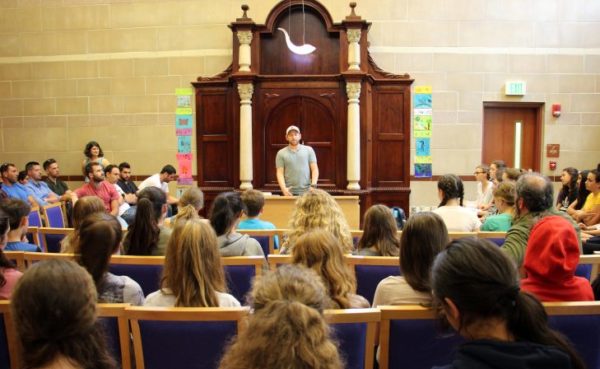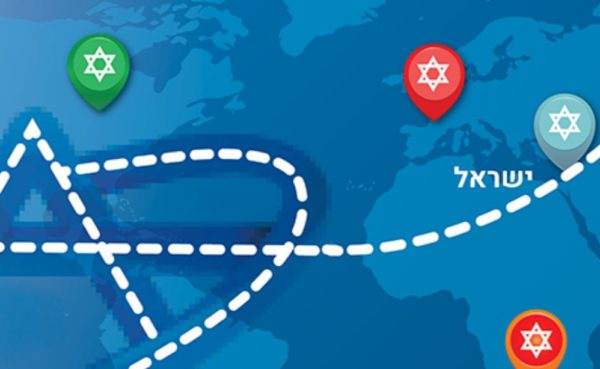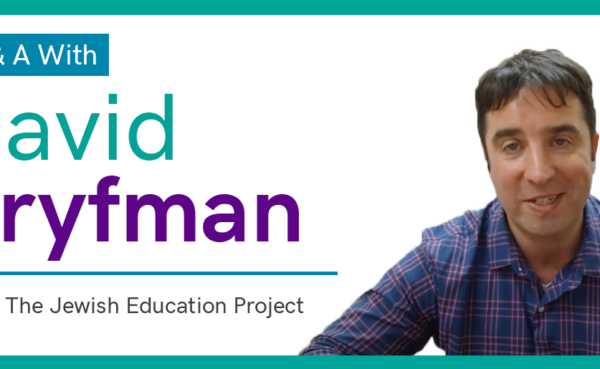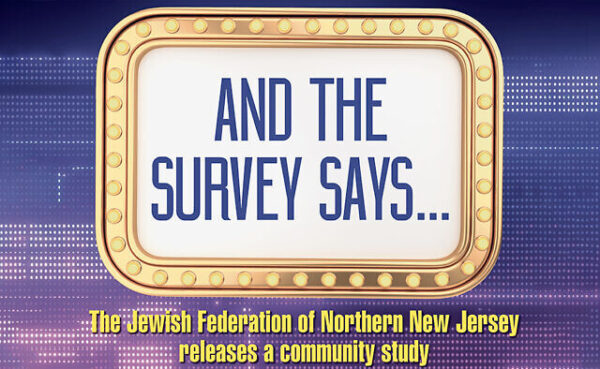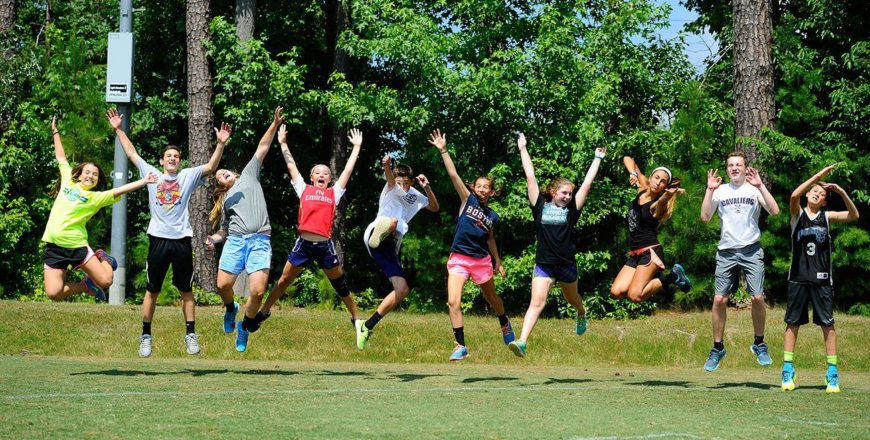
Being a Participant Observer: Best Practices for an Effective Site Visit
By Eitan Cooper
I pass by cows on my left, and what appear to be endless amounts of farmland on my right. I’m in Northern Wisconsin, or at least I think I am; I haven’t seen a sign in quite a while. Then, almost out of nowhere, I encounter what I’m expecting. Hammered onto a tall tree to my right, just off the side of the road, is a Jewish star.
I’ve finally arrived at my destination. The tree with the Jewish star points me to a long and winding dirt road, which eventually leads me to an oasis of Jewishness in a Northern Wisconsin wilderness. This is a place that produces rich, powerful Jewish experiences. For many, if not most, this is home.
This is a Jewish summer camp.
This camp is participating in the Hiddur Initiative, a multiyear project of the Foundation for Jewish Camp (FJC), funded by the Jim Joseph Foundation, the Maimonides Fund, and The AVI CHAI Foundation. Hiddur aims to deepen the ways in which eight Jewish summer camps across the country think about Jewish education. Rosov Consulting has been working closely with funders, stakeholders and the camps themselves for the last two years, and my visit is part of our annual “site observations” at all eight camps.
As part of Hiddur, the camp’s director, assistant director, and lay leadership work with a coach to identify areas in which they can “amplify” or “beautify” what they do, Jewishly. My goal during this 24-hour visit, as well as the seven others I conduct, is to gain a deeper understanding of the camps’ efforts.
On the one hand, my short visit to this camp may seem insignificant. What can I possibly observe in only 24 hours that is meaningful? On the other hand, my research experience and my years as a practitioner have taught me that in the context of camp, where everything moves quickly and each day is jam-packed with meaning, the rhythms of one day can be equal to one month in “camp time.”
Still, as with any evaluation or research activity, this visit requires careful planning and execution in order to be productive. I’ve learned that more than any other factor, the key to a successful site visit is becoming a participant observer. One must simultaneously earn the trust of the members of the camp community, and at the same time maintain an outsider’s perspective.
As a participant, I have the distinct advantage of seeing things unfiltered, as they naturally unfold. More importantly, I also have the opportunity to experience what it feels like to be part of the camp community. As much as possible, I need to feel like I am a part of what is going on. For the moment, I don’t care about the forest—I am only interested in the trees. I want to sing, dance, taste, smell and breathe everything that this camp has to offer.
Yet, as an effective observer, I need to take a step back to make sure I separate myself from the experience and my emotions. I must not miss the forest for the trees.
How do I become a participant observer, particularly in the context of a Jewish summer camp? Below are seven practices I try to keep in mind, always:
- Look the part: I want to be sure that I look like as much of an “insider” as possible. As such, I always opt for shorts and a t-shirt. When I walk around, I rarely ask for directions- even if I’m not entirely sure where I’m going; I don’t want to blow my cover. I try to make sure to keep my cell phone in my pocket, as most camps have fairly strict policies prohibiting counselors and campers from using their phones. If camp is singing a song, I sing along. If they are doing a dance I try—emphasis on try—to dance with them.
- Set up “home base”: While at camp, I need a space outside of the bubble of camp to process what I am learning. If I’m seen vigorously jotting down notes in public, I would no longer blend in. As such, one of my first tasks is to determine where my base will be. Sometimes, it’s the director’s office. Sometimes, it’s a secluded area at the edge of camp. Sometimes, it’s my car.
- Survey the Jewish scene: During my several circuits walking around camp, I pay special attention to how space is used, Jewishly. What types of signs and symbols are there, if any, that indicate Jewishness? Where in camp can these symbols be found—centrally, or on the outskirts? Do signs, paintings, and decorations look old and worn down (indicating they have been a part of camp culture for a long time), or new and untouched (indicating new initiatives)?
- Feel the Rhythm of a Jewish day: I try, as a participant would, to feel the rhythms of a Jewish day at camp. I put myself into the shoes of a camper. I ask for a schedule, as a camper would see it. What are the Jewish parts of my day? What are the parts of my day that I will most look forward to? Is there any overlap between these two?
- Watch and learn: When participating in an activity that is Jewish, I observe and take note of campers’ reactions. Do they look engaged? Do they look happy? I try to speak with a few campers and staff at any activity I observe—sometimes, I learn this was an “off” day and that the activity is often more stimulating.
- Plan for unstructured time: I make certain that I will have ample time for walking around camp. On my walks, I try to pick up on snippets of conversations that I can glean from campers or counselors. These small anecdotes often speak to more general trends that I can confirm later.
- Put on a friendly face: I try to introduce myself to strangers, and enthusiastically convey my interest in learning about the camp community. I want those with whom I speak to feel as though I am here as a friendly visitor who is curious to learn more—not an evaluator, here to see if they have passed a test. I make sure to memorize whatever interview protocols or focus group guides I have prepared—so it doesn’t ever feel as though I am reading from a “check list” when I am with someone.
Becoming a participant observer is a contradictory exercise. The key, I believe, is knowing how—and when—to switch hats. But this isn’t an easy dance. It’s challenging to transition (sometimes in the span of only a couple minutes) from participating, to observing, to recording, to processing. When done right, though, the data collected from such an experience is rich and invaluable.
Eitan Cooper is a senior project associate at Rosov Consulting.
